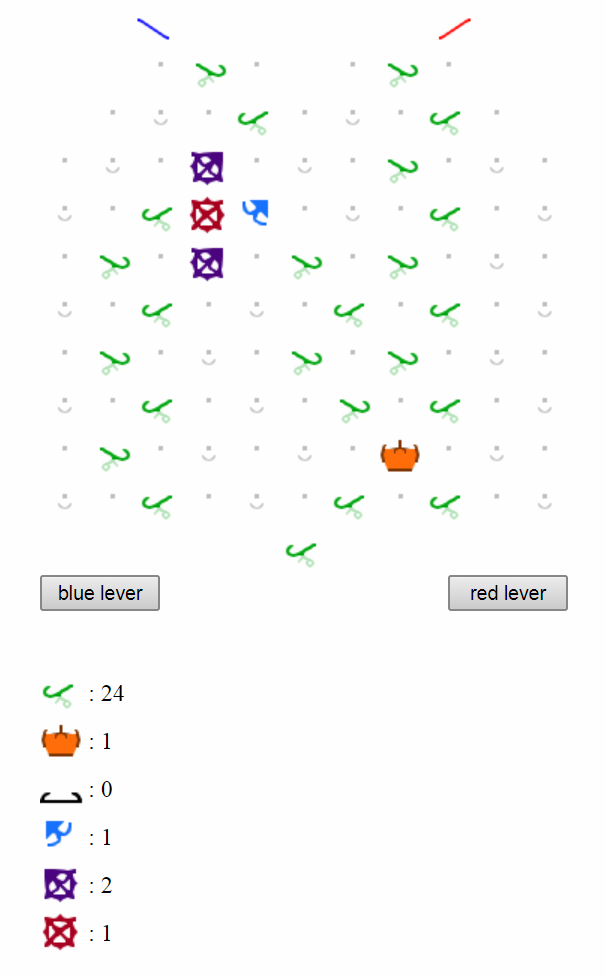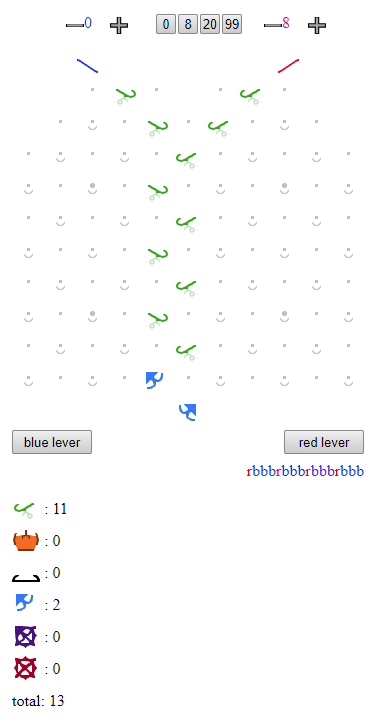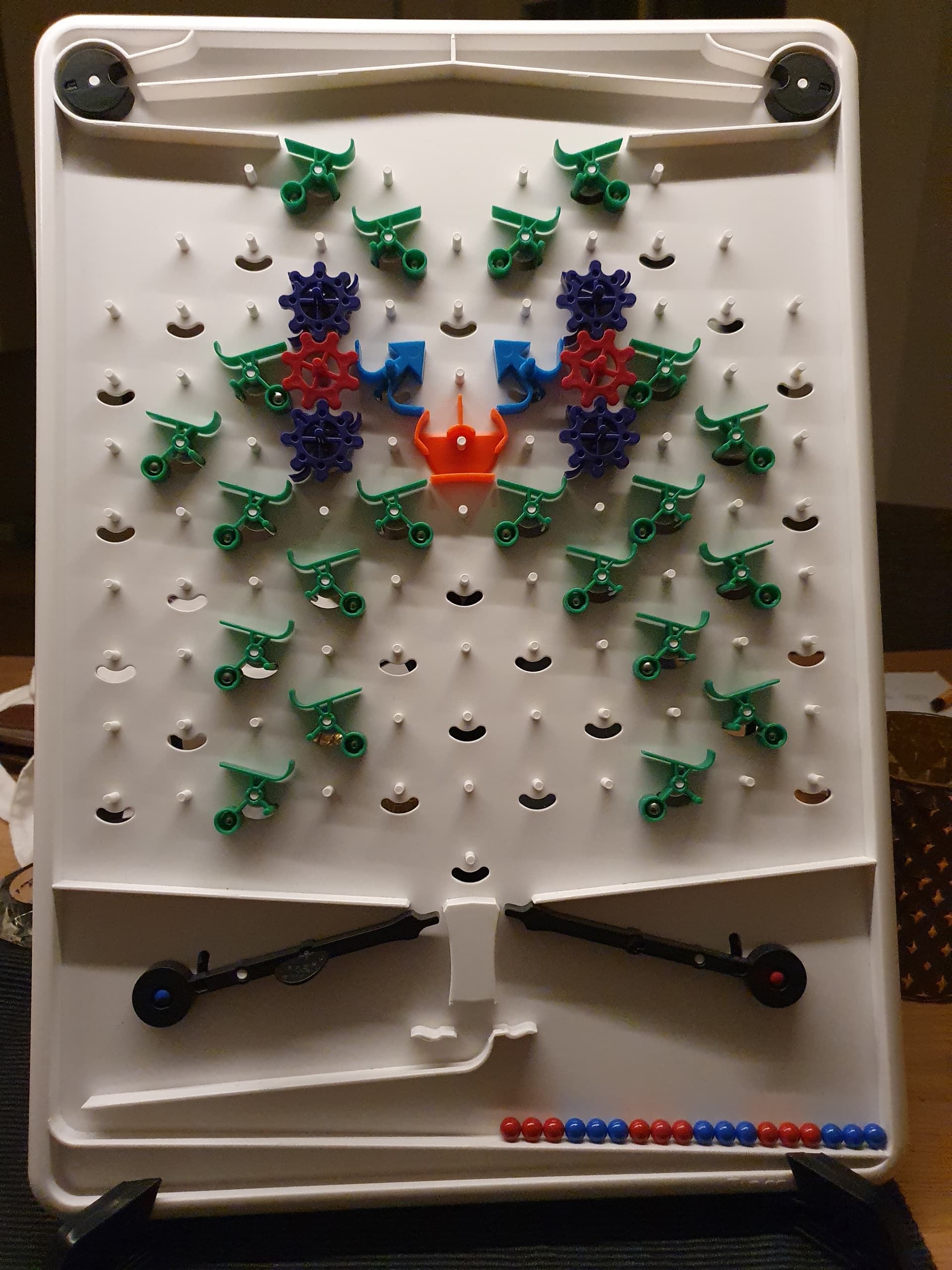In the spirit of out of the box thinking, I have a 10-part solution:
Load the blue source with BBBRBBBRBBBRBBBR, create a 10-ramp path down to somewhere on the left, and start with the blue lever.
This generalises to a 13-part solution to any puzzle where the required solution is just a fixed output pattern: alternate the pattern between red and blue sources, and use 12 ramps to feed down to a bit just above the levers.
If you really want an out of the box “solution” to any puzzle in the book: set up an empty board, with just the components specified in the required output (an interceptor or some registers or some (gear) bits) then manually place balls in the appropriate places and set (gear) bits as required. That achieves the required output to any puzzle in the book with an absolute minimum of parts.
I stand by my earlier comment: “It’s a neat way of getting the required pattern, but it doesn’t actually solve challenge #39”
It not solving puzzle #39 doesn’t mean that it’s not worth playing with and/or exploring further, just that it’s not a solution to puzzle #39. It’s like having an exam question that reads “Prove Pythagoras’ Theorem” and getting a (correct!) 5-line proof of Fermat’s Last Theorem back. It doesn’t answer the question set, but it’s far from worthless - in fact, it’d be a headline-worthy achievement and would revolutionise number theory.
I’m not condemning your layout, just saying it doesn’t actually answer the question asked.



 .
.